- Home
- Hokkaido, Japan
- J-ALERT: Japan’s “National Early Warning System”
J-ALERT: Japan’s “National Early Warning System”
As part of our research into the impact of North Korean missile testing in Hokkaido, we have developed this report on Japan’s J-ALERT system, the “National Early Warning System” in Japan. In a separate article we provide reactions from Japanese residents to emergency messages.
What is the J-ALERT System in Japan?
The J-ALERT system is used by the Japanese government to communicate emergency messages to the general population. J-ALERT messages are generally issued in times when citizens’ lives are in danger, such as earthquakes, typhoons, tsunamis, extreme weather conditions, volcanoes, and instances of missile testing by North Korea.
What Does a J-ALERT Message Look Like?
When the Japanese government decides to send a message via the J-ALERT system, those messages are delivered to cell phones, shown on TVs, radio, and are broadcasted in public via loud speakers.
Below are some examples of common J-ALERTs delivered via cell phones and TVs:
Earthquake warning
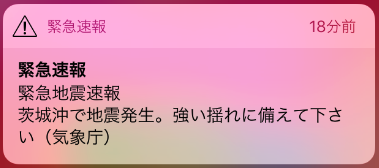
North Korean missile launch alert on the phone and on a TV
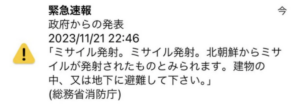
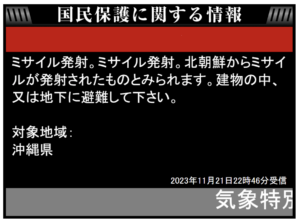
When Does the Japanese Government Issue a J-ALERT Message?
For the purpose of this report, we interviewed the Japan’s Fire and Disaster Management Agency (FDMA). This is the official statement on the purpose of a J-ALERT:
The purpose of the J-ALERT is to warn citizens of emergency situations where immediate action is required, such as the launch of a ballistic missile, earthquakes, tsunamis, etc.
— Fire and Disaster Management Agency, Japanese Government
Which Part of the Japanese Government Issues the J-ALERT?
The J-ALERT is run by the government, overseen and implemented by two separate government agencies. Japan’s Cabinet Secretariat (the central executive branch) makes the decision as to whether a J-ALERT will be issued, and then the Fire and Disaster Management Agency (Japan’s government fire department) issues the J-ALERT message to be sent out to the designated areas.
The J-ALERT Broadcasted Process
The process of issuing a J-ALERT includes the following steps: Various government agencies are responsible for detecting the emergency, those agencies communicate the nature of the emergency to the Cabinet Secretariat, the decision to make a public announcement is determined by the Cabinet, and then the Fire and Disaster Management Agency activates the J-ALERT system and the message is sent out.
Here is an example for when the Ministry of Defense notifies the Cabinet that there is a North Korean missile flying towards Japan’s airspace:
1. The Ministry of Defense detects a missile launch
2. If the missile is expected to land in or fly over Japanese territory, the Cabinet Secretariat sends out orders for alert
3. The Fire and Disaster Management Agency issues the J-ALERT to local governments and service providers
4. The alert is sent out to individual cell phones, TVs, radios, and public loud speakers
In the case of ballistic missiles, the J-ALERT is sent when the Ministry of Defense recognizes a missile launch, predicts that it will land in or fly over Japanese territory, and the Cabinet Secretariat makes the decision that evacuation is necessary, and initiates the alert.
— Fire and Disaster Management Agency, Japanese Government
Recent Instances of J-ALERT Announcements
Many residents in Japan have an impression that the most common type of J-ALERT is the one that warns about North Korean missile testing. Looking at the data, it is correct that in recent years, the most common use of the J-ALERT system was for announcements about missile tests, with 6 tests that triggered the J-ALERT in the period of 2020-2024.
Here is a record of the most recent J-ALERTs, based on data from the Fire and Disaster Management Agency (FMDA):
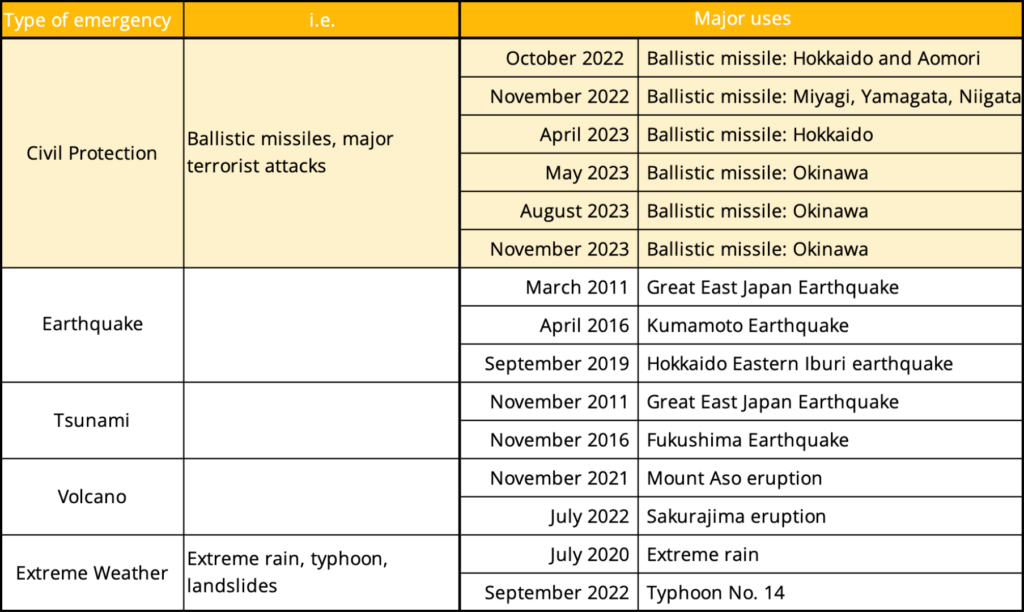
What Should I Do When I Get a J-ALERT?
Depending on the nature of the announcement, the Japanese government will issue different kinds of instructions and guidance. One common theme is to instruct residents to seek shelter and protection.
- In the case of earthquakes:
- Seek shelter and protection
- Move away from areas of danger, such as near windows that might break, and brick fences that might collapse
- In the case of a ballistic missile launch:
- Evacuate immediately
— Outside: go into a nearby building or underground, such as underground shopping arcade and subway stations
— No buildings: Lie flat on the ground or take cover behind anything that might offer protection
— Inside: Stay inside well away from windows, or in a windowless room
Some of these instructions are general safety procedures, similar to emergency drills taught to school children. When a major earthquake takes place, it can be a good idea to try to seek protection under a desk or table, etc.
The English-language translations of the J-ALERT communications often include instructions to “collect precise information immediately,” but it is not obvious what that is supposed to mean. In instances of missile testing when the Japanese government suggests that residents “evacuate,” it is not clear where to go, or how “leaving” might help make them more safe.
Are J-ALERT Messages Available in Foreign Languages?
The J-ALERT system notifies all residents in the specified area, through phone notifications, messages on national TV, and via loud speaker announcements in public places. These messages are delivered in Japanese only. If you can’t understand Japanese, the sense of emergency might be clear, but you will likely not understand the nature of the announcement.
For many foreigners living in Hokkaido, the messages can be alarming and confusing.
For information and other emergency communication in English and other languages, there is an emergency information app developed by the Japan Tourism Agency called “Safety Tips.” This app is available in 15 languages, and instantly notifies information of emergencies regarding earthquakes, tsunamis, extreme weather warnings, and ballistic missile launches.
Below is an example of an emergency message from the Japanese “Safety Tips” cell phone app.
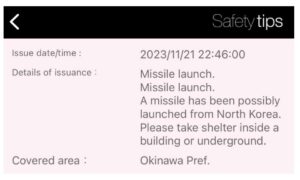
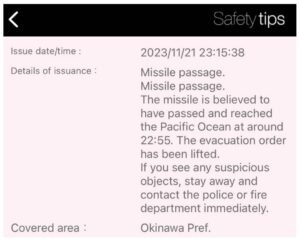
Hokkaido Residents Reactions to J-ALERT Messages
It is natural for the Japanese government to want to communicate with the residents of Japan in times of emergencies. As the residents of Japan are involved in different activities of daily life, the Japanese government uses the full range of media (cell phones, TV, radio, and outdoor messages) to try to bring emergency messages to as many resident as possible.
Some might argue that the government has a responsibility to do so, and in many cases, residents may benefit from a detailed warning, or appreciate clarification about special circumstances.
However, some residents of Hokkaido believe the system is over-used, and complain that the messages feel irrelevant, are confusing, and create unnecessary anxiety.
For more on this topic, see our article about local Hokkaido reactions to North Korean missile tests.


